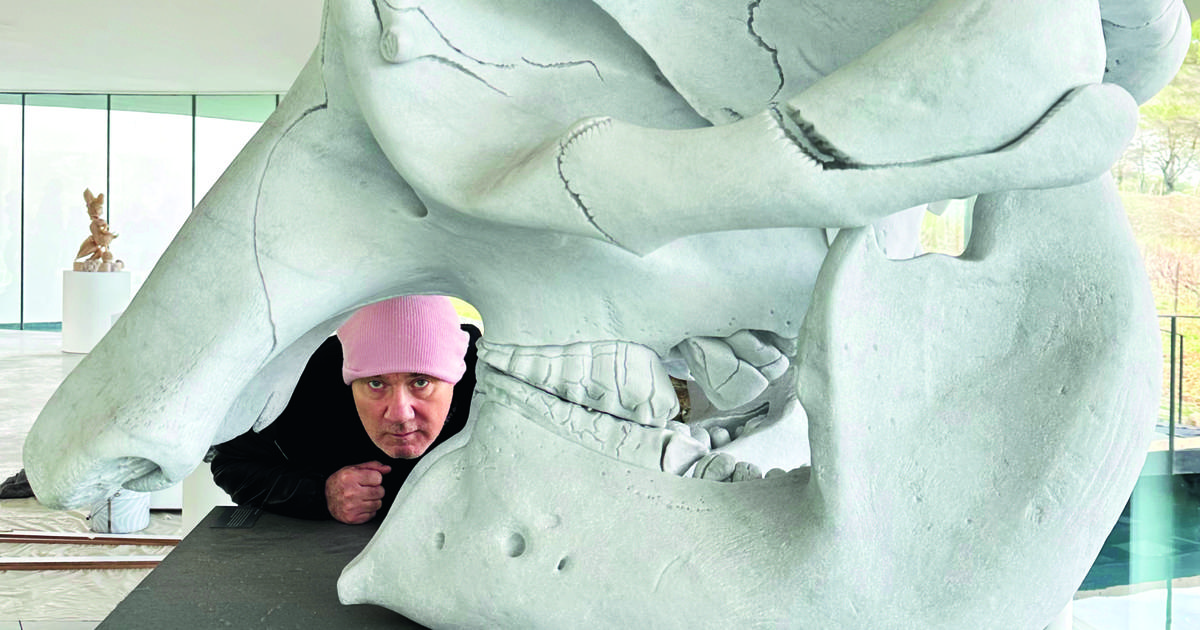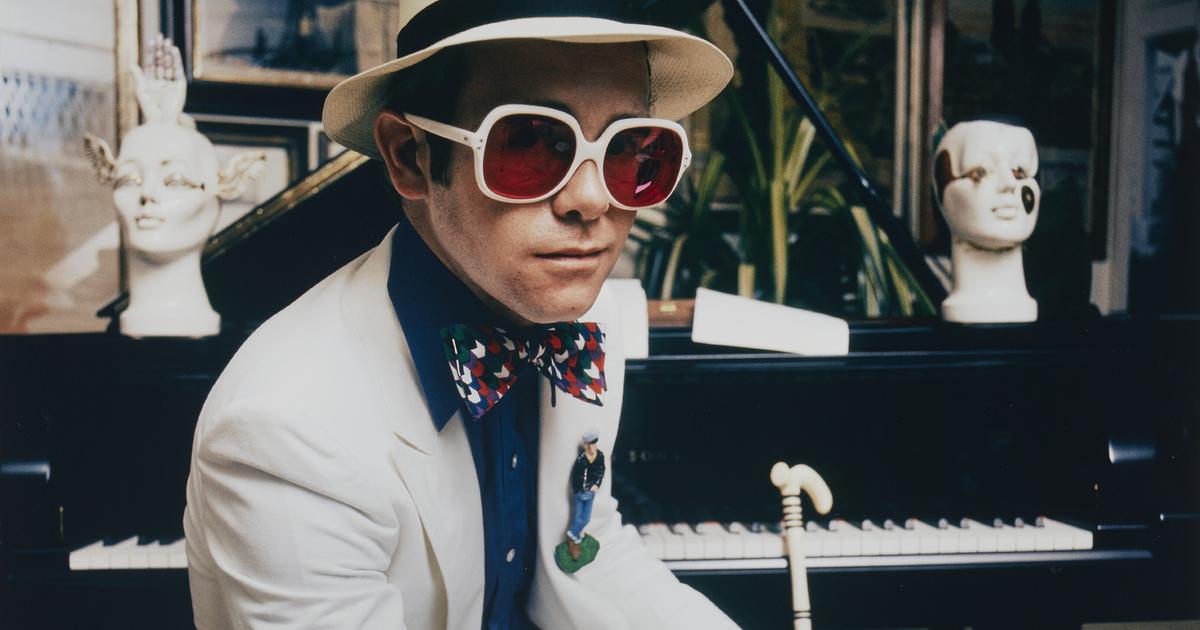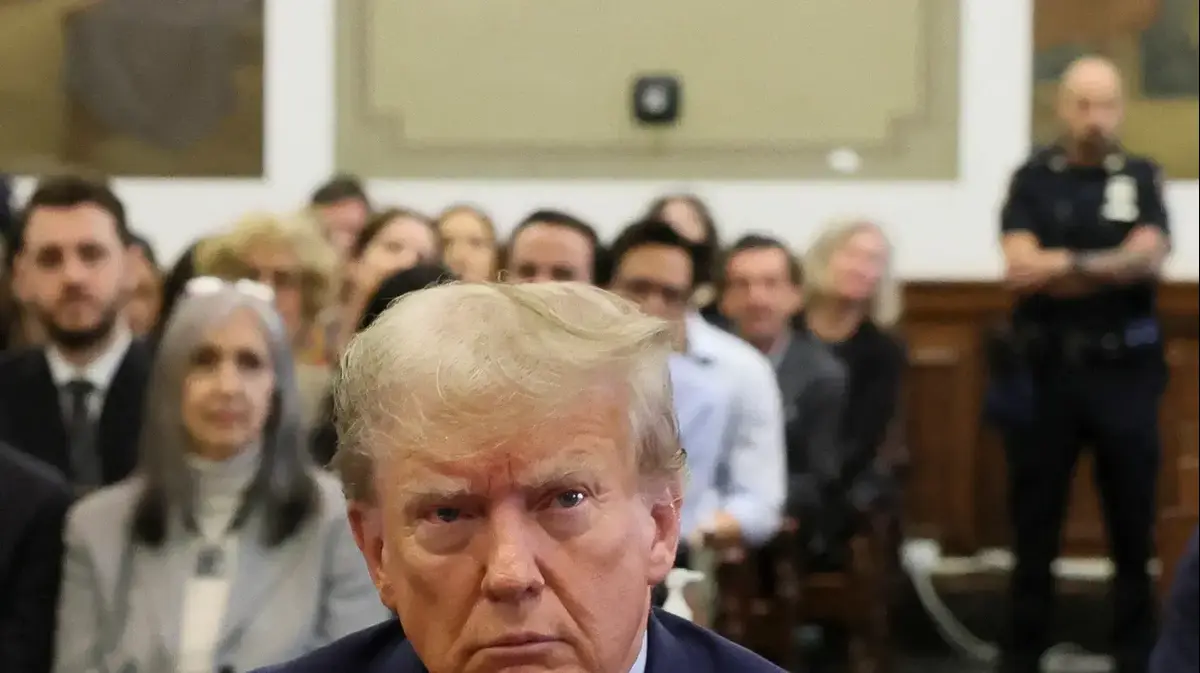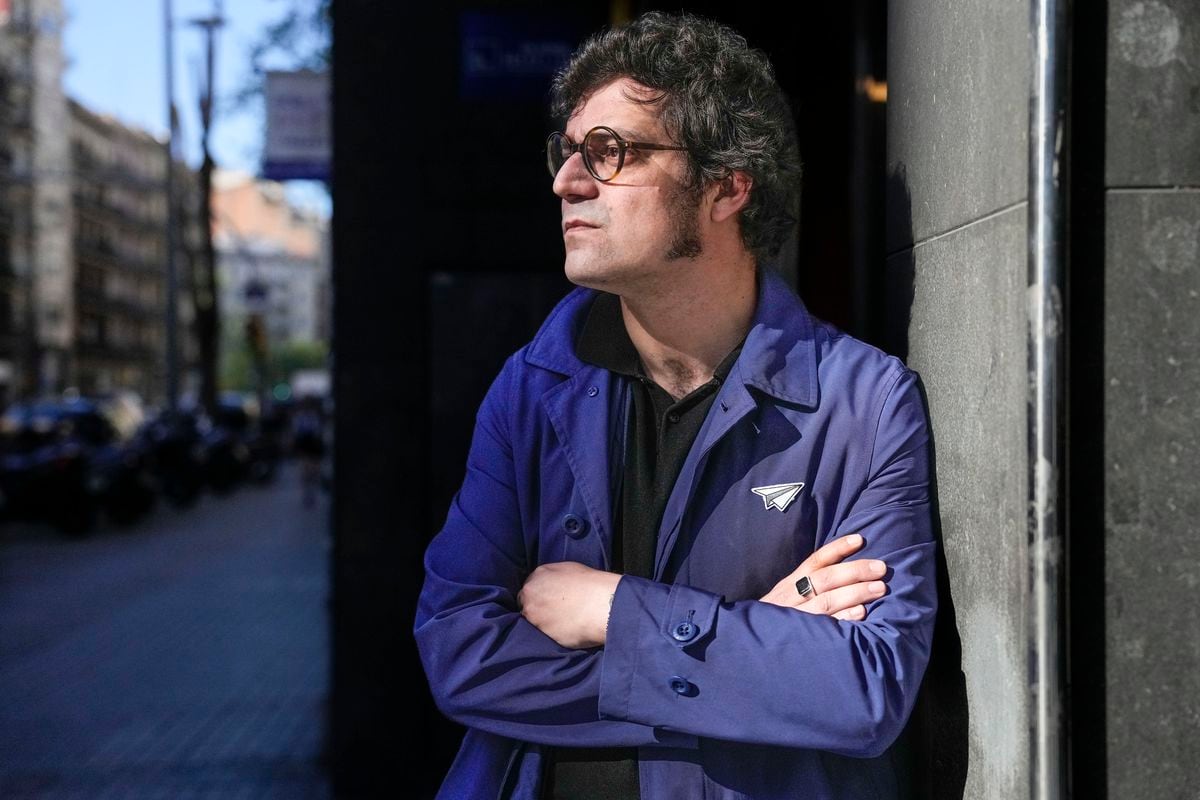In May 2003, the opening of the Fashion and Textile Museum caused spring rashes among members of certain academic circles in the British capital.
“It is an exercise in self-indulgence, a frivolous undertaking”, maintained the historian of the suit Aileen Ribeiro, with the media of the time as speaker.
"It lacks all relevance, like its founder," she sentenced.
Almost two decades later, the aforementioned has something to say to the former professor of the Department of Art at the University of London: “It is true, I felt that my work was not being accounted for.
So either I valued it or nobody was going to do it.
And I'm still working here, which is the important thing”.
Zandra Rhodes ends her statement with a laugh.
The one who laughs last.
Her museum is today the watchword of Bermondsey Village, as distinguishable as nearby Tower Bridge,
an orange and pink bulk in the gray-brown landscape of the south-east bank of the Thames.
An industrial warehouse from the fifties that the Mexican architect Ricardo Legorreta brought out the colors in, which was his first project in Europe.
Rhodes had to sell his house in the Notting Hill area and then embark on a donation drive to acquire it, at the suggestion of her close friend Andrew Logan, a sculptor, jeweler and performance artist as fabulous as the designer herself.
A seven-year, five-million-pound endeavor.
Since 2008 it has been attached to Newham College, which makes it one of the educational centers with the greatest projection in the city, as well as a laboratory for research and textile documentation and a factory of ideas.
Some of the most substantial fashion exhibitions of the last three decades have come from there.
The one with the longest journey is about to reach Spain.
Dress with motifs from the work 'Fish' (1955), by Picasso.© Succession Pablo Picasso.
VEGAP;
Madrid;
2022
Decorative textile in a silk-screened cotton blend with motifs taken from the work Sketchbook, by Picasso. Succession Pablo Picasso.
VEGAP;
Madrid;
2022
It is entitled Artists' Textiles and, between March 12 and June 19, it will tell what contemporary art owes to everyday clothing —at least in terms of mass reach— at the Barrié de la Maza Foundation in A Coruña, which Thus, it resumes its exhibition thread dedicated to design and confirms the Galician town as a destination to see fashion.
Originally conceived in 2014, this will be its eighth stop, after visiting, among others, the American Textile History Museum in Lowell (United States), the Toronto Textile Museum (Canada) and the Modern Art Museum in Shanghai (China).
A unique opportunity to "observe how ordinary people have been able to come into contact with high-literate modern art, in a personal and intimate way, through everyday clothing and home accessories", say Geoff Rayner and Richard Chamberlain,
directors of the Target gallery in London and curators of the exhibition.
In total, nearly two hundred pieces signed by Matisse, Dufy, Chagall, Braque, Calder, Moore, Picasso, Dalí, Miró, Vasarely or Warhol, including unique garments and decorative fabrics that "endorse the quality that fabrics possess as a medium to combine art and mass production”, emphasizes Dennis Nothdruft, head of exhibitions at the Fashion and Textile Museum.
Fauvism, cubism, surrealism, expressionism, abstraction, op and pop art in a prêt-à-porter version.
But are we talking about genuine artistic expression or mundane folk/decorative art?
That is the question.
between unique garments and decorative fabrics that “endorse the quality that fabrics possess as a means of combining art and mass production”, underlines Dennis Nothdruft, head of exhibitions at the Fashion and Textile Museum.
Fauvism, cubism, surrealism, expressionism, abstraction, op and pop art in a prêt-à-porter version.
But are we talking about genuine artistic expression or mundane folk/decorative art?
That is the question.
between unique garments and decorative fabrics that “endorse the quality that fabrics possess as a means of combining art and mass production”, underlines Dennis Nothdruft, head of exhibitions at the Fashion and Textile Museum.
Fauvism, cubism, surrealism, expressionism, abstraction, op and pop art in a prêt-à-porter version.
But are we talking about genuine artistic expression or mundane folk/decorative art?
That is the question.
Textile by Fuller Fabrics based on motifs taken from Joan Miró's work 'Farmer's Dinner' (1955). Courtesy Fashion and Textile Museum;
London
Fuller Fabrics dress based on motifs taken from Joan Miró's work 'Farmer's Dinner' (1955). Courtesy Fashion and Textile Museum;
London
“It can be said that yes, there is some snobbery in how textile design has been considered from the sphere of art.
Although I don't need artist treatment, I'm not a painter who prints fabrics either.
I am proud to be a textile designer, which also sounds much more exotic”, concedes the founder of the London museum.
That of Zandra Rhodes (Chatham, United Kingdom, 1940) is a paradigmatic case: she was going to be an artist, but she ended up as a designer because she needed to earn a living.
“I never thought of dedicating myself to fashion, even though it was in her bones [her mother was a test dressmaker at Worth, a Parisian haute couture house].
She wanted to study drawing, which was what I liked.
That's why I went to art school,” she recounts.
BarbaraBrown,
one of his professors at the former Medway College of Design and famed textile creator of Heal's Fabrics—a manufacturing beneficiary of the Arts and Crafts movement of the late 19th century—changed his perspectives.
“It was because of her that I fell in love with this profession.
The problem is that when I started, in the early sixties, nobody bought my designs.
To get ahead I had to learn to make patterns and thus make dresses with my fabrics, ”she continues.
In 1969, already established with her own label, her creations reach Diana Vreeland's Vogue and the doors of the American market are opened to her.
The rest is fashion history.
But what about art?
“Why not!” exclaims Rhodes, whose legendary 1977 punk wedding dress has its place in the permanent collection of the New York Met.
“For me, fashion is an art form.
If it has been included in museum programming for 30 years, it is for a reason.
On the other hand, the line between art and entertainment is very thin.
Look at Damien Hirst."
Printed tie with Dalí's work 'Infinito-Where?', 1946-1947.Salvador Dalí;
Gala-Salvador Dalí Foundation;
VEGAP;
A Coruna;
2022
Scarf with motifs of Salvador Dalí's work 'The number, please?'
(1946-1947).Salvador Dali;
Gala-Salvador Dalí Foundation;
VEGAP;
A Coruna;
2022
Of course, Artist Textiles also pays tribute to the luminary of the Young British Artists, the generation that turned the art market upside down in the 1990s.
It is the concession of the exhibition to the serial artistic practice of this century, together with the emotional stroke of Howard Hodgkin printed on home textiles by the Designers Guild decoration firm, the conceptual splashes of the canvas garments of the American Sterling Ruby (regular collaborator by Raf Simons and with his own fashion brand, SR Studio. LA. CA.) and the motifs inspired by Bosch's paintings that Rhodes herself devised for Valentino's spring/summer 2017 collection (Pierpaolo Piccioli's first solo ).
The artist Zandra Rhodes.Chris Bissell;
2020
Hirst contributes one of the jacquard tapestries HENI Editions produces for him and a scarf from his series of patterned accessories for Alexander McQueen.
The designer had already died when the deal took place, in 2013, but the one who was once the most expensive artist in the world cataloged the collaboration as “a match made in heaven”.
His textile designs for Prada, The Row or Levi's actually sound like an echo of Warhol, when he accepted commercial jobs indiscriminately if there was good money involved.
Tapestry in jacquard fabric by artist and designer Damien Hirst, titled 'Enter the Infinite-Revelation' (2016).Damien Hirst and Science Ltd.;
VEGAP;
2022
Scarf with a print of Matisse's work 'Écharpe nº 1' (1947).© Succession H. Matisse/ VEGAP/ 2022
That intention of dynamiting the "erroneous dividing line" between the fine arts and the applied arts advocated at the beginning of the last century by the intellectuals of the Bloomsbury Circle in the decorative company Omega Workshops (as before William Morris and after the Bauhaus) is, for the case, what really counts in the sample.
The vision/practice of some artists who, instead of limiting themselves to licensing their works to be reproduced in series, decided to become art and part of the creative process.
Like Sonia Delaunay with her simultaneous dresses, which released the color of the form.
Like Nigel Henderson and Eduardo Paolozzi at their Hammer Prints textile cooperative.
Like Pablo Picasso, who even persuaded Dalí, Calder,
Miró and Léger to become involved in the design of the Modern Masters collection by American fabric manufacturer Dan Fuller.
“Put a work of art in your house”, said Vanessa Bell and Robert Fry.
Also if it is an Ikea piece with a Zandra Rhodes print.
Scarf with print of Marcel Vertes' work 'Pennies from Heaven' (1946).Courtesy Fashion and Textile Museum;
London
Textile with motifs from the work 'Queen Mary' (1936), by DuncanGrant.Duncan Grant;
VEGAP;
A Coruna;
2022
'Libro American fabrics with Steinberg trains book' (1949), by cartoonist Saul Steinberg.Saul Steinberg;
VEGAP;
A Coruna;
2022




/cloudfront-eu-central-1.images.arcpublishing.com/prisa/WBSNDOXTFVGAZFSY7JE7AK3OQM.jpg)
/cloudfront-eu-central-1.images.arcpublishing.com/prisa/Z4UBGLQEOBHVJGLHLVFFREHAC4.jpg)









